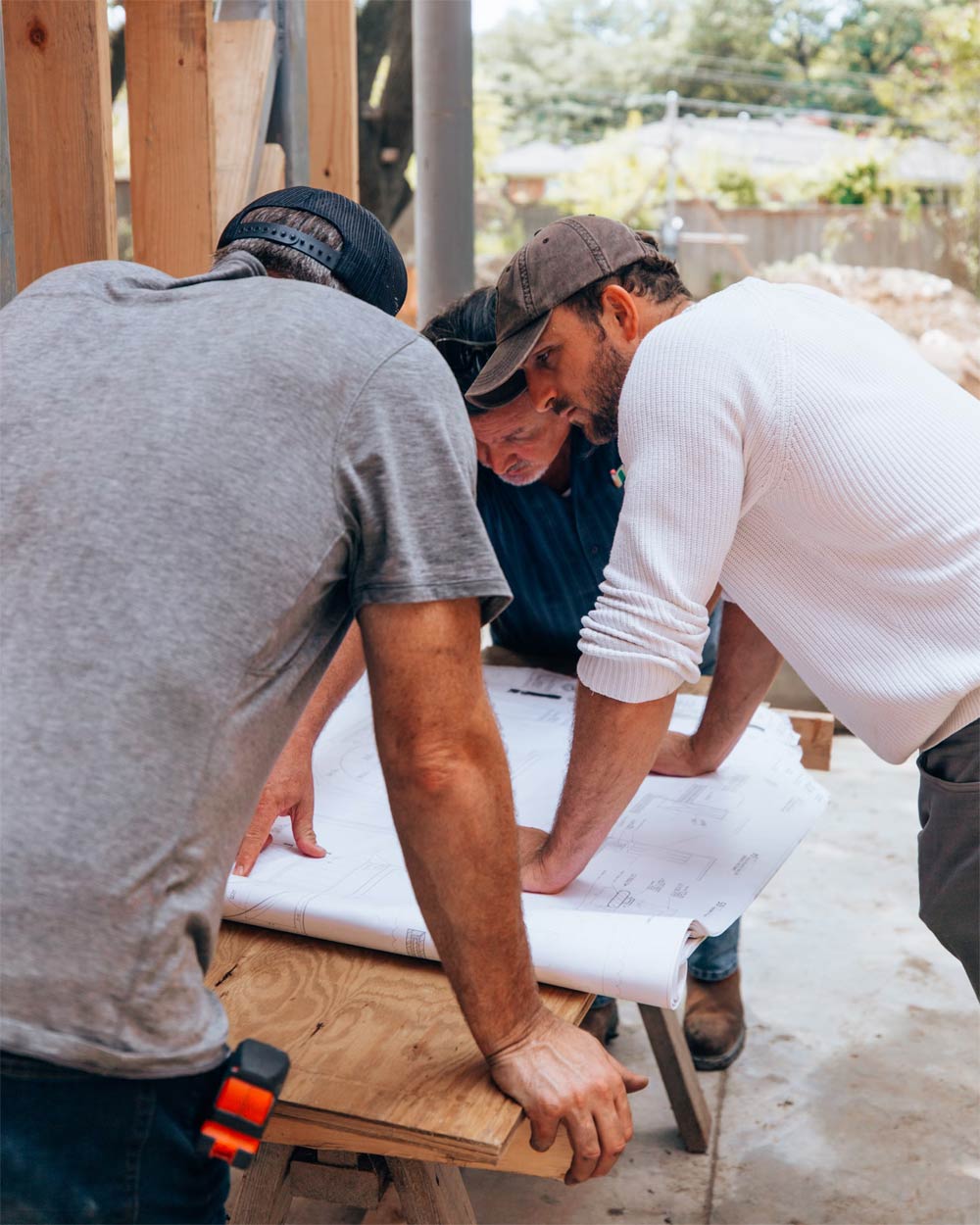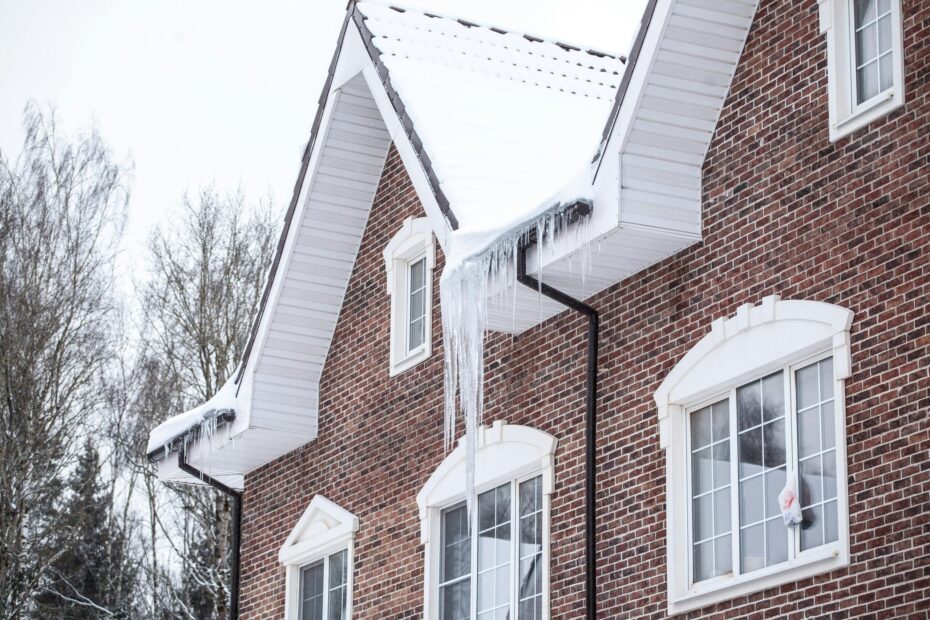Portland is famous for its verdant greens and the promise of rain or shine (mostly rain) around the corner. What’s wonderful for our gardens can be challenging for our homes, especially our roofs. Without proper care, the constant moisture which comes with occasional bursts of wind, snow, and ice, can compromise even the sturdiest roofs. We will help you understand the most common culprits causing roof damage in the Portland area so that you can avoid unnecessary and expensive roof replacements.
Weather Woes: Portland’s Rainy and Icy Challenges
Let’s dive deeper into the weather issues that can impact your roof. Portland’s famous constant drizzle causes water to seep beneath shingles, creating leaks and fostering the growth of mold, lichen, and fungus. These uninvited guests make your roof look unsightly and can result in structural problems if left unchecked. Moss, for example, can trap moisture against the shingles, accelerating their deterioration. The root systems of moss can work their way under shingles, prying them loose and creating openings for leaks.
Regular cleaning and preventative treatments, such as applying a moss-retardant solution, are essential for keeping moss at bay. Consider setting a budget for professional roof cleaning every few years, especially if your home is surrounded by damp areas or shaded by trees.
Accumulated snow and ice that strain roof structures
The cold season brings different threats, such as accumulated snow and ice, which can strain your roof’s structure, especially if it’s not designed to handle heavy snow loads. Building codes in the Portland area typically consider the expected snow accumulation, but heavy snowfalls can still exceed these expectations. It’s important to remove the snow immediately if a heavy snow load results in a sagging roof or your roof shows other signs of stress, such as cracking around chimneys or vents.
Never attempt to remove large amounts of snow by yourself, especially from a steep roof. The risk of falling and serious injury is high. Instead, contact a professional snow removal service. It is also a must for a professional roof inspection after a heavy snowfall. As snow and ice melt and refreeze, water can sneak under shingles and cause them to loosen. Over time, this freeze-thaw cycle can take a toll on your roof’s integrity. Asphalt shingles, for example, can become brittle and crack under repeated freezing and thawing.
Poor drainage due to ice dams
Another issue to consider during winter is ice dams, which form when melted snow freezes again at the roof’s edge, creating a blockage that hinders effective drainage. The water that gets trapped can seep under the shingles and penetrate your attic or ceiling, resulting in water damage, mold development, and potentially structural issues. To avoid the formation of ice dams, it’s important to ensure adequate ventilation in your attic. This ventilation allows warm air to escape, preventing the accumulation of heat that triggers snow melting at the roof’s edge.
Ensure your attic insulation is adequate to minimize heat transfer from your living space. Regular gutter cleaning is essential, as clogged gutters can contribute to ice dam formation. In some cases, installing heat cables along the roof eaves can be an effective preventative measure. Consult a qualified Portland roofing company to determine the best approach for your roof and climate.
Nature’s formidable force
Nature’s formidable force is another potential source of trouble. Portland’s abundant trees provide shade and beauty but can be a threat during storms. Large trees with heavy branches become a hazard when weighed down by snow, ice, or strong winds. Dead or diseased branches are particularly dangerous, as they are more likely to snap and fall onto your roof. Regular tree trimming and inspections by a certified arborist are essential for maintaining healthy trees and protecting your roof.
Critters that chew on roof components
Critters can also be a source of roof problems. Animals like squirrels, raccoons, and birds may find their way onto your roof and into your attic through gaps or soffit vents. Once inside, they can chew on wiring, insulation, and roof components. Insects like ants and termites can also find weaknesses in your roof and establish nests that can cause structural damage. Regular roof inspections can help identify potential entry points for these pests, and sealing any gaps or holes will help keep them out.
The Silent Culprit: Lack of Care and Maintenance
 Perhaps the most preventable cause of roof damage is a lack of care and maintenance. Just like your car needs regular oil changes and tune-ups, your roof needs periodic inspections and maintenance to stay in top shape. Here are the things that can happen if you neglect your roof.
Perhaps the most preventable cause of roof damage is a lack of care and maintenance. Just like your car needs regular oil changes and tune-ups, your roof needs periodic inspections and maintenance to stay in top shape. Here are the things that can happen if you neglect your roof.
Clogged Gutters: A Gateway to Roof Problems
Clogged gutters pose a significant threat to the integrity of your roof and home. Gutters prevent water damage and structural issues by directing rainwater away from the roof and foundation. However, when leaves, dirt, and debris clog gutters, their ability to function effectively is compromised.
This obstruction can lead to several serious consequences. Water backup becomes a major concern. Instead of flowing away from the roof, water accumulates in the gutters and can eventually seep under the shingles. This infiltration can cause leaks into the attic or living spaces below, potentially damaging ceilings, walls, and insulation.
Regular cleaning and maintenance of gutters are essential, particularly before the rainy season begins and again before winter sets in. Removing leaves, dirt, and other debris ensures that gutters can effectively channel rainwater away from the roof and prevent the formation of ice dams.
Cracked Chimneys: Vulnerable to Weather and Wear
Chimneys endure exposure to various environmental factors that can gradually lead to structural damage, particularly in older homes. One primary culprit is the freeze-thaw cycle prevalent in many climates. As temperatures fluctuate, materials within chimney bricks and mortar expand and contract, stressing their integrity over time. This cyclic stress can create cracks and fissures that, if left unchecked, provide pathways for water infiltration during rain or snowmelt.
Chimneys face challenges from the intense heat generated by fires within them. This heat exposure can accelerate the deterioration of chimney materials, further weakening their structural integrity. Cracks formed due to heat stress can compromise the chimney’s ability to safely vent smoke and gases, posing risks to the structure and the home’s occupants.
Unchecked chimney cracks compromise their function and pose risks to the roof and surrounding areas. Water penetration through these cracks can lead to extensive damage, including moisture issues within the home and potential structural decay. To prevent these problems, homeowners are advised to schedule routine inspections of their chimneys by qualified Portland roofing contractors.
These inspections should include thorough assessments for any signs of cracks or damage. Timely repairs and maintenance, such as resealing cracks and replacing deteriorated materials, are crucial in preserving chimney integrity and ensuring safe operation. By addressing issues promptly, homeowners can protect their homes from the costly consequences of chimney-related water damage and structural compromise.
Leaky Skylights: Beauty with a Potential Downside
Skylights are prized for their ability to brighten interiors and add aesthetic charm to homes, yet ensuring they remain leak-free requires meticulous installation and ongoing maintenance. One common issue arises from the natural wear and tear of seals around skylights over time. These seals can degrade, particularly in harsh weather conditions, leading to the potential for leaks during heavy rainfall.
Furthermore, improper ventilation around skylights can create another challenge: condensation buildup. When warm, moist air becomes trapped near skylights without adequate ventilation, it can condense on surrounding surfaces, including the roof structure. This buildup compromises the skylight’s efficiency and poses a risk to the roof’s overall structural integrity.
Regular inspections are crucial to prevent these issues. Homeowners should routinely check for signs of wear in the seals around their skylights, such as cracking or brittleness, which could indicate the need for repair or replacement. Monitoring for any indications of moisture around the skylight frame or on the ceiling beneath it is also essential.
Addressing these potential problems promptly can prevent larger issues, such as water damage to the interior and structural deterioration of the roof. By staying proactive with inspections and maintenance, homeowners can maximize the benefits of skylights while minimizing the risks associated with their installation.
Roof Damage: Catching Problems Early
Regular roof inspections are critical preventive measures that maintain the integrity and longevity of your home’s roof. By conducting these inspections regularly, homeowners can identify and rectify minor issues before they escalate into major problems. One common issue to watch for is shingle damage. Missing, cracked, or curled shingles can expose the underlying roof underlayment to potential water damage, leading to leaks, and structural issues if not promptly addressed.
Another key area of concern during roof inspections is flashing. Flashing around vents, chimneys, and skylights can become warped or damaged over time, compromising its ability to effectively seal these vulnerable areas against water infiltration. Addressing flashing problems promptly can prevent costly water damage to the roof structure and interior of the home.
General deterioration of roof materials is a natural consequence of prolonged exposure to the elements. Sun exposure, varying weather conditions, and the simple passage of time can cause roof materials to degrade. This deterioration weakens the roof’s ability to protect the home from the elements, making it susceptible to leaks and other forms of damage.
To prevent these and extend the lifespan of your roof, prompt repairs, and proactive maintenance are essential. This includes replacing damaged shingles, repairing or replacing damaged flashing, and periodically assessing the overall condition of the roof materials.
Investing in regular roof inspections by qualified Portland roofers ensures that potential issues are identified early and addressed before they result in more extensive and costly repairs. By staying proactive with maintenance, homeowners can protect their investment in their homes and avoid the inconvenience and expense of unexpected roof repairs in the future.
A host of preventable issues, from minor leaks to significant structural damage, can be easily avoided with routine care and maintenance. Implement a regular inspection schedule and address issues promptly to protect your investments and ensure your roof performs effectively. Taking proactive steps to maintain gutters, chimneys, skylights, and overall roof integrity is key to avoiding neglect’s silent but costly consequences.
